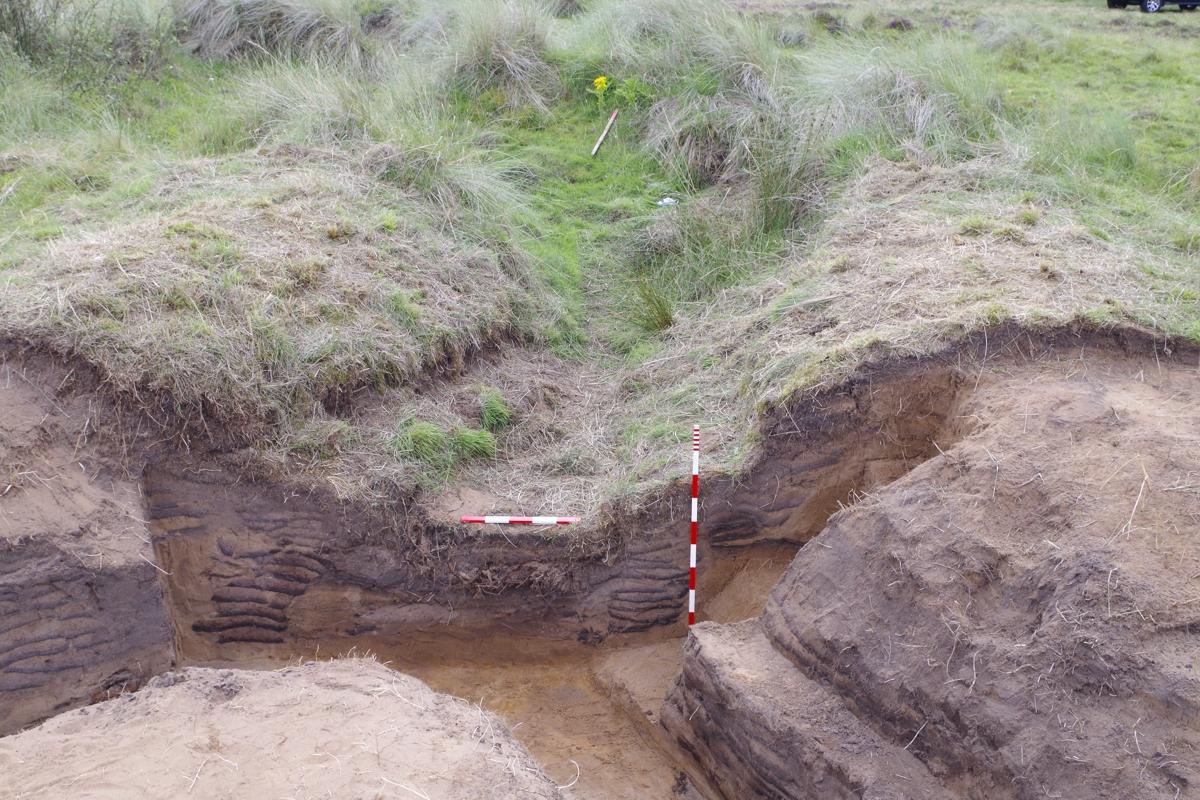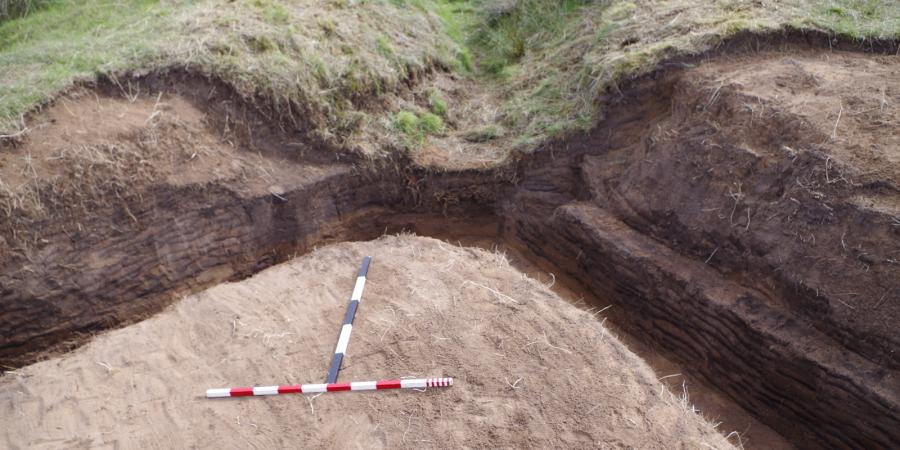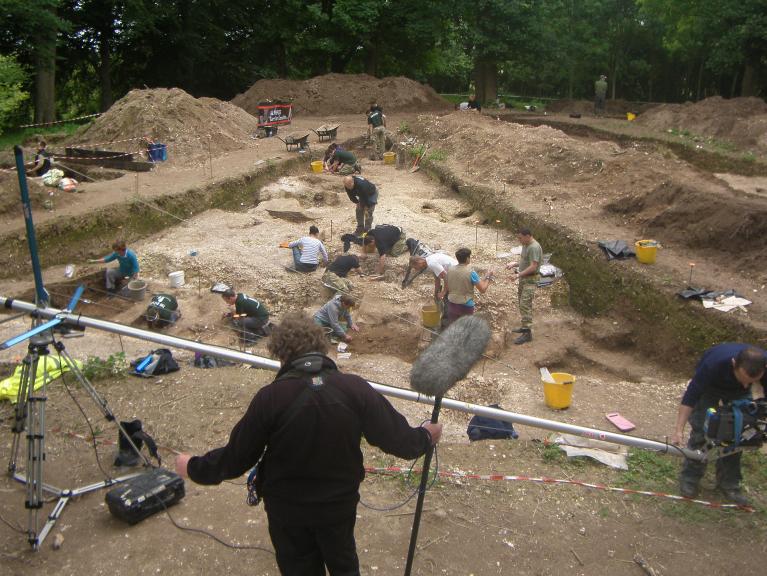Following a very successful first season in 2017 excavating the complex of practice trenches and other battlefield features on the Barry Buddon Training Camp, thought to date to the First World War, Wessex Archaeology in partnership with the Defence Infrastructure Organisation (DIO) and Breaking Ground Heritage, returned to the trenches in August 2018. Under the auspices of Operation Nightingale, the Ministry of Defence’s recovery programme for military veterans using archaeological projects, the 2018 works were designed to investigate the chronology and development of the trench complex while also giving two groups of veterans the opportunity to develop their archaeological skills. With the vast majority of the veterans having never been on an archaeological site before, the Wessex Archaeology site team guided them through opening up excavation areas, GPS and Total Station survey to the recording of the trenches through the drawn and written record.
Two of the trenches targeted the relationships between sections of the earthworks complex. Trench two targeted the join between a second line trench and a larger crenelated trench running perpendicularly to it. Trench three targeted the point where the zigzag communications trench met the full height frontline trench. After looking closer at the larger trench in trench two, it was suggested that the size of it (considerably wider and with longer fire bays compared to British trenches of the time) may make it a recreation of the Hindenburg Line, a German defensive line begun in September 1916 and completed over the winter of 1916/17. The excavation demonstrated that while this large trench contained no sandbags or other revetting structures, it was contemporary to the second line trench which ran into it from the north. Within the slumped fills in the base of these two trenches the veterans discovered two concentrations of rusted food tins, the shapes of which suggest that they formerly contained sardines, bully beef and soup. After all, an army marches and trains on its stomach. A concentration of 19th-century bullets from Snider, Martini-Henry and Enfield rifles were found within the redeposited material on the sides of the trench, suggesting that the area contained targets and butts for training predating the construction of the trench complex. These may have been fired from a series of slit trenches discovered along the ridgeline to the south, as this was a typical defensive set up in conflicts such as the Boer War.

Trench three located the join between the communications trench and the frontline trench. Both of these trenches contained the ‘tiger stripe’ remains of sandbags along their edges, revetting the trench sides and holding back the redeposited material dug out to form the parapet and paradose of the trenches. Elements of the timber revetting stakes for these sandbags were still present, as were heavily decayed duckboards within the base of the frontline trench. In the backfill of the trenches there was a concentration of barbed wire, some clearly still in the rolls which it had been in along the top of the trench before it was thrown down into the trench. The highlight of the finds was the complete head of a British Army trenching shovel, found below the barbed wire in the base of the trench. One hundred years on and we’re still using the same tools.
The two other trenches targeted features outwith the earthwork system, which appeared to be part of the wider complex of battlefield features, with trench one targeting one of a series of small round pits and trench four targeting a linear trench around 50 m long. The small round pit proved to be a possible foxhole, although it contained no dating material beyond 1970s blank cartridges. The linear trench proved to be a full depth fire trench, minus the crenelations. The presence of two shallower trenches to the west, one at 30 yards and one at 60 suggests that this may have been used as a pistol and rifle range, with the shallower trenches being the butts containing the targets.
Central to our understanding of the earthworks was walking around the wider complex with the veterans, using their knowledge of battlefields, conflict and military training to identify features less obvious in function than the trenches themselves. These included a probable mine crater, with a sap leading to it, the series of possible slit trenches along the ridgeline to the south mentioned above and a series of potential dugouts of different designs along the southern trench line. All of these suggested that the complex contained an example of every feature the soldiers might encounter on the Western Front, allowing their trainers to familiarise the troops before they were sent across the Channel.
The most important part of the project, however, was the difference it made to the veterans taking part. Each time I work on these projects I am highly impressed with the speed with which the veterans take to various archaeological tasks, bringing in their previous knowledge and adapting it to the situation. Whether it was a background in technical drawing allowing individuals to produce plans and sections of the trenches or an understanding of soil morphology from their gardening experience, the veterans developed enormously, and the success of the project is entirely reflective of their efforts. I am particularly delighted to see that several of them have been volunteering on other projects around Scotland since the end of the 2018 Barry Buddon dig and I hope they continue to seek out more experiences.

